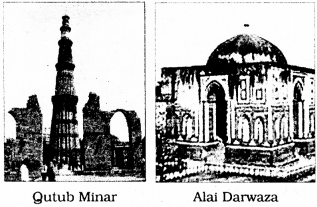Students can Download History Chapter 2 Medieval India and Political Transition Questions and Answers, Notes, KSEEB Solutions for Class 9 Social Science helps you to revise complete Karnataka State Board Syllabus and score more marks in your examinations.
Karnataka State Syllabus Class 9 Social Science History Chapter 2 Medieval India & Political Transition
Class 9 Social Science Medieval India & Political Transition Textual Questions and Answers
Medieval India And Political Transition Notes Question 1.
The founder of Gujarat Prathihara dynasty was ___________
Answer :
Harichandra.
KSEEB Solutions For Class 9 Social Question 2.
Prithviraj Chauhan defeated________ in the first battle of Terrain.
Answer:
Mohammad Ghori.
Medieval India And Political Transition Class 9 Notes Question 3.
The prominent Commander of Mohammad Ghori was ____________
Answer:
Qutubuddin Aibak.
Medieval India And Political Transition Class 9 Notes Pdf Question 4.
The first woman to rule among the Delhi Sultans was___________
Answer:
Razia Begum.
Medieval India And Political Transition Lesson Notes Question 5.
The famous Sultan of the Khilji Dynasty was___________
Answer:
Allauddin Khilji.
KSEEB Solutions For Class 9 Social Science Question 6.
The capital city was shifted from Delhi to __________during the rule of the Tughlaq.
Answer:
Devagiri.
II. Answer the following questions:
Medieval India And Political Transition 9th Standard Notes Question 1.
Explain the contributions of Rajput kings to the field of literature.
Answer:
Rajput kings encouragingly contributed a lot to the field of literature. The Rajput kings Bhoja and Munja were scholar themselves. The poets Padmagupta and Halayudha in the Court of Munja. Great Jain scholars like Shantisena, Prabhachandrasuri, Ghanapala enjoyed the patronage in the court of King Bhoja.
Great poetic works like “Gita Govinda” of Jayadeva, ‘Kirataijuniya’ and ‘Karapurmanjari’ of Rajashekhar, “Mahaveera Charitra” and ‘Uttara Ramacharitra’ of Bhavabhuti, historical works like Rajatarangini of Kalhana, “Kumarpalacharitra” of Hemachandra, “Prithvirqjavijaya” of Chand Bardani are the significant works of Rajaputs’ period.
Rajput kings encouraged the development of Gujarati, Rajasthani and Hindi languages.
Medieval India And Political Transition Questions And Answers Question 2.
Explain the administration system of Iltamush briefly.
Answer:
Iltamush divided his kingdom into provinces (Ikta) and to oversee the administration, appointed provincial officers (Iktadars). He appointed a group of 40 slaves to advise in the matters of administration and justice. The Prime Minister and the Judges were advisors to the Sultan. He brought gold and silver coins into circulation. He completed the construction of Qutub Minar which was started in Qutubuddin’s time.
Medieval India And Political Transition Question And Answer Question 3.
What were the administrative reforms implemented by Allauddin Khilji?
Answer:
Allauddin Khilji was not only a great General but also a capable administrator. He divided his vast empire into provinces and appointed Governors to look after them. He abolished religious endowments, teams, land and subsidy.
He established an efficient intelligence network. He levied heavy taxes on the rich. He banned the consumption of liquor. He also banned social gatherings of his lieutenants and their socialization with the public. He directed to collect tax from the landlords and farmers.
Medieval India And Political Transition Class 9 Questions And Answers Question 4.
What were the administrative reforms implemented by Mohammad-bin-Tughlaq?
Answer:
Mohammad bin Tughlaq compiled a detailed record of land taxes pertaining to landholdings. He established the Department of Agriculture. Uncultivated land was utilized for farming and other purposes. He rendered financial help to the farmers. He increased the taxes in ‘do-ab’ area. He had gold and silver coins made according to the prevailing prices. He brought into circulation gold coin called ‘dinar’ and silver coin called adali’. After some years brought in copper and brass symbolic coins into circulation. He carried on his administration in the areas he had conquered in the Deccan. He conquered Madhurai in South India and appointed Jalaluddin Hasan Shah as governor for its administration. Thus Mohammad bin Tughlaq brought administrative reforms in practice.
Mediaeval India And Political Transition Question 5.
What were the contributions of Delhi Sultans to art and architecture? Give examples.
Answer:
The Delhi Sultans introduced a new style of architecture known as “Indo- Islamic” Arches, domes, and minarets form the main features of this style.

The Delhi Sultans constructed forts, mosques, palaces, public buildings, madrasas and choultries. Example of Indo-Islamic style are: Khuwat-Ul-Islam Mosque, Qutub Minar and Jamait Khan Mosques at Delhi.